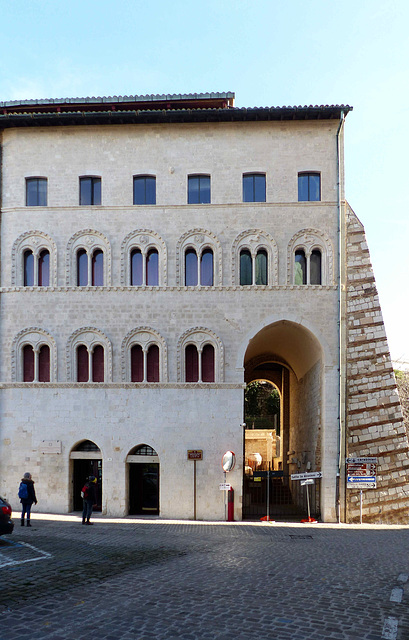Ancona - Santa Maria della Piazza
Ancona - Santa Maria della Piazza
Ancona - Santa Maria della Piazza
Ancona - Santa Maria della Piazza
Ancona - Santa Maria della Piazza
Ancona - Santa Maria della Piazza
Ancona - Santa Maria della Piazza
Portonovo - Santa Maria di Portonovo
Sirolo - Badia San Pietro
Loreto - Basilica della Santa Casa
Loreto - Basilica della Santa Casa
Loreto - Basilica della Santa Casa
Loreto - Basilica della Santa Casa
Loreto - Basilica della Santa Casa
Loreto - Basilica della Santa Casa
Cingoli - Collegiate di Sant'Esuperanzio
Cingoli - Collegiate di Sant'Esuperanzio
Cingoli - Collegiate di Sant'Esuperanzio
Cingoli - Collegiate di Sant'Esuperanzio
Cingoli - Collegiate di Sant'Esuperanzio
Apiro - Abbazia di Sant'Urbano
Apiro - Abbazia di Sant'Urbano
Apiro - Abbazia di Sant'Urbano
Ancona - Duomo
Ancona - Duomo
Ancona - Duomo
Ancona - Duomo
Ancona - Duomo
Ancona - Duomo
Ancona - Harbour
Urbino - San Bernardino
Urbino - Caffetteria
Urbino - Edicola Cartoleria
Urbino - Duomo
Urbino - Duomo
Urbino - Duomo
Urbino - Duomo
Urbino
Urbino - Raphael
San Leo - Pieve di Santa Maria Assunta
San Leo - Pieve di Santa Maria Assunta
San Leo - Duomo
San Leo - Duomo
San Leo - Duomo
San Leo - Duomo
Location
See also...
Keywords
Authorizations, license
-
Visible by: Everyone -
All rights reserved
-
14 visits
Ancona - Palazzo del Senato


Ancona was founded in 387 BC by Greek colonists from Syracuse. Today it is a port city of about 100.000 inhabitants and the capital of the Marche region. The port has always been of great importance because it was the shortest sea connection to Dalmatia.
After the fall of the Roman Empire, Ancona was attacked successively by the Goths and Lombards between the 3rd and 5th centuries but recovered its strength and importance. It was one of the cities of the Pentapolis of the Exarchate of Ravenna. In 840, Saracen raiders sacked and burned the city.
After 1000, Ancona became increasingly independent, eventually turning into a maritime republic, often clashing against the nearby power of Venice. In the 12th century, it was strong enough to push back the forces of the Holy Roman Empire. Its ships took part in the Crusades. In the struggle between the Popes and the Holy Roman Emperors Ancona sided with the Guelphs.
The Malatesta, took the city in 1348. They were ousted in 1383. In 1532 Ancona definitively lost its freedom and became part of the Papal States.
-
Here used to be the Roman Forum in ancient times. The Palazzo del Senato was built in the early 13th century as the seat of the Senate Council, when the municipality ceded its old seat (the current Palace of the Archbishop) to the noble Cortesi family to settle in the new and larger building.
The building, in Romanesque style, has a white stone façade opened by two rows of mullioned windows decorated with columns and covered with round cornices. On the right side of the front there is also a high and narrow arch.
The bombings that took place during WWII severely damaged the interior of this medieval building. Fortunately, its facade remained intact.
After the fall of the Roman Empire, Ancona was attacked successively by the Goths and Lombards between the 3rd and 5th centuries but recovered its strength and importance. It was one of the cities of the Pentapolis of the Exarchate of Ravenna. In 840, Saracen raiders sacked and burned the city.
After 1000, Ancona became increasingly independent, eventually turning into a maritime republic, often clashing against the nearby power of Venice. In the 12th century, it was strong enough to push back the forces of the Holy Roman Empire. Its ships took part in the Crusades. In the struggle between the Popes and the Holy Roman Emperors Ancona sided with the Guelphs.
The Malatesta, took the city in 1348. They were ousted in 1383. In 1532 Ancona definitively lost its freedom and became part of the Papal States.
-
Here used to be the Roman Forum in ancient times. The Palazzo del Senato was built in the early 13th century as the seat of the Senate Council, when the municipality ceded its old seat (the current Palace of the Archbishop) to the noble Cortesi family to settle in the new and larger building.
The building, in Romanesque style, has a white stone façade opened by two rows of mullioned windows decorated with columns and covered with round cornices. On the right side of the front there is also a high and narrow arch.
The bombings that took place during WWII severely damaged the interior of this medieval building. Fortunately, its facade remained intact.
Paolo Tanino has particularly liked this photo
- Keyboard shortcuts:
Jump to top
RSS feed- Latest comments - Subscribe to the comment feeds of this photo
- ipernity © 2007-2024
- Help & Contact
|
Club news
|
About ipernity
|
History |
ipernity Club & Prices |
Guide of good conduct
Donate | Group guidelines | Privacy policy | Terms of use | Statutes | In memoria -
Facebook
Twitter

Sign-in to write a comment.